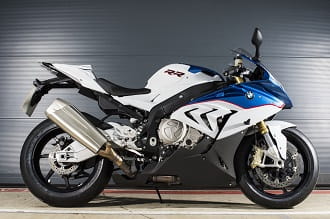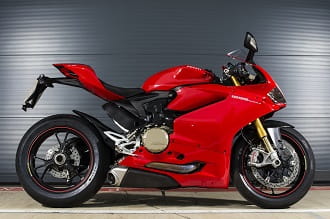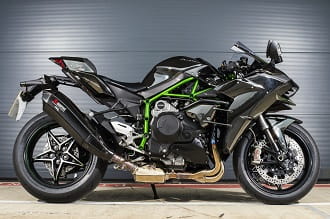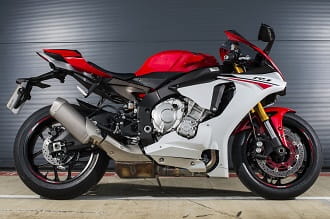YAMAHA R1: Weekend Rossi Warrior
Michael Dunlop might not like it – the maverick Irishman dramatically switched from Yamaha to BMW at the TT last week, but there’s something about the Yamaha that’s intoxicating straight away. The noise of that crossplane crank, the drilled out top yoke with built in flex just like Valentino’s M1. And the robotic LED projector front-end. It’s not the prettiest bike ever to come out of Yamaha, and the red inlays in the brake discs are race track cool circa 2002, but it is quite possibly the best bike to come out of Yamaha’s Hamamatsu factory yet.
Everything about the Yamaha R1 works perfectly in pursuit of being the best 1000cc sports bike ever made. Get on it and you are Valentino Rossi with five laps to pull in and catch Marquez.
From the moment you fire it up the crossplane crank motor is engaging, the angry growl, the way it picks up revs keeps you on your guard and it all just, well, works.
The other three might have the power advantage and on a straight the Kawasaki will leave the Yamaha panting, but as a package there’s nothing else like it.
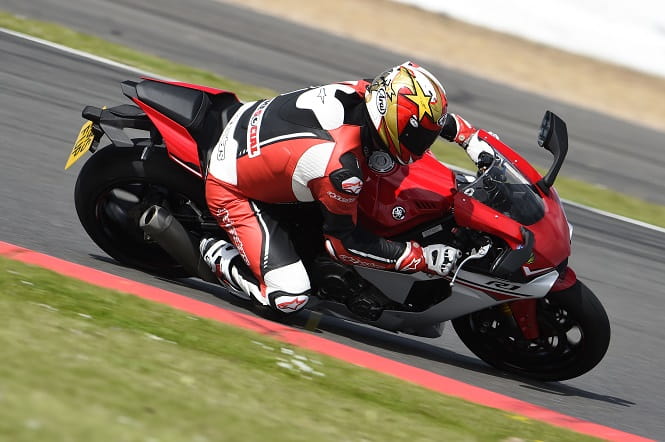
The steering is quick, it holds a line and the electronics - which include slide control, wheelie control and anti-wheelie - mean you can be brave with the throttle. It’s helped by the grip of the Pirelli Diablo Super Corsa SP rear tyre too. On the exit of a corner it can be twitchy, just occasionally giving a shimmy from the front end as the tyre grips and slides then finds grip again. But it never gets worrying.
You can be so brave in fact that occasionally its sheer speed in and out of a corner can catch you out. Come out of a corner and it drives hard once the revs are up and the slide control and traction control let you take liberties. It’s not failsafe but it does give you massive confidence in opening the throttle hard.
It’s set-up a bit soft as standard and it dives quite a lot on the brakes, meaning the rear-end occasionally goes light on the way into a corner, but it’s hard to fault in any other way. The fully-adjustable KYB suspension can be adjusted using old fashioned screwdrivers and allen keys to get the best out of it.
No other bike in its class is as easy to ride fast as the Yamaha R1, and that’s a decision shared by my former tester Bruce Dunn, who got off the Yamaha and said: ‘That’s sex.’ He’s not wrong.
The Ducati is beautiful and the one I’d want to own and look at, but the Yamaha is the one that I could keep riding faster, and faster with more consistency. What a bike, what a noise.
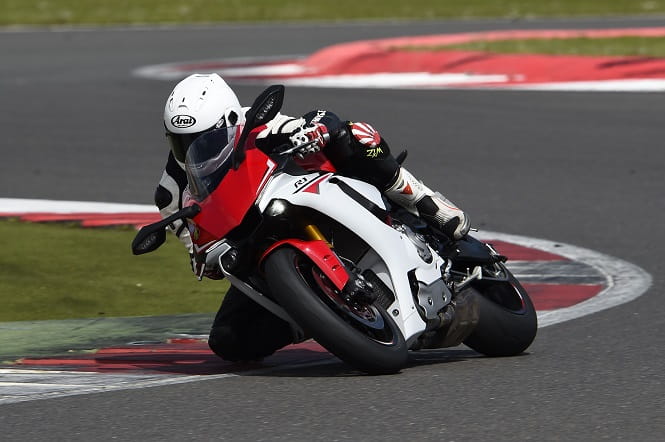
KAWASAKI H2: Dragstrip refugee
Maybe my first introduction to the big Kawasaki with the already fearsome reputation wasn’t the best intro. A drying track and brand new Bridgestone RS10 tyres to scrub in with 197.bhp on tap (or 207.2bhp with ram-air) certainly kept me on my toes.
But then your first experience of the £22,000 Kawasaki H2 is never to be forgotten.
Just warming it up attracts a crowd in the Silverstone paddock. On the overrun the supercharged motor sounds like a dozen killer chickens trying to escape. Chirp, chirp, chirp. It’s the one bike that everyone keeps asking us for a quick go on. The one with a fearsome reputation already. How many other bikes have imprinted their reputation on world motorcycling history so quickly?
Just look at it. Long nose, droopy, that projectile central headlight, the sparkly green trellis frame. Why trellis I hear you ask? Because the bike is engineered to run so hot that a beam frame would cook the rider. It’s a Manga cartoon on two wheels.
It’s not a track bike, at 238kg it’s heavier by a good 30kg or so than the rest. It’s more of a barnstorming autobahn basher, but in the UK you need a track to feel its performance so we threw it in as a wildcard. Plus, we just had to get a test on it.
On paper it may be in the same real sports bike class as the rest, but the way the supercharger delivers that power puts it ahead in performance. On the Hanger Straight it pulls ten bike lengths on the second most powerful bike here – the 205bhp Ducati – even with a better rider on board.
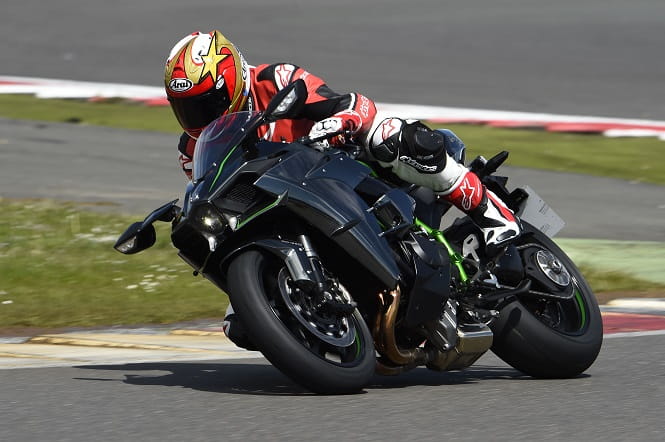
There’s traction control and it works well, even lifting the front wheel in the wet when I try to entice it to slide, but get it upright and feed that power in and the world goes backwards. There’s a boost gauge with a little fan on the dash too. When that gets up to three you better hang on.
It feels heavy, because it is. But it still handles well on the road and there’s a nice plush feeling from the suspension. For the record, it’s all fully adjustable but not electronic like the S1000RR and Ducati. It’s ultra-stable, and once you wind the back shock up a bit, it can hustle on the road. The Brembo brakes give plenty of power and feel too, but on the brakes you know you’re hauling up a big, fast motorcycle. AFter two days of abuse they were starting to fade slightly.
The trademark Kawasaki roar is there. The Akrapovic carbon-fibre can emits that off-beat growl sped up by the supercharger spinning hard. There’s a load of stuff around on YouTube and social media about it not accelerating faster than a ZX-10R. It’s all lies. The H2 accelerates like nothing else with a number plate on two wheels.
Because of that powr, and that supercharger, it’s jerky on the throttle and sometimes unpredictable. The transition from off throttle to on the gas is snatchy, but you learn to ride round it. Experience racer and road tester Bruce Dunn has done tons of miles on the H2 when testing with MCN. After every ride he says it’s possessed.
But that can’t stop you being in awe of the most technologically advanced Kawasaki road bike they have ever built (if you forget the H2R). On-the-road, the Kawasaki accelerates so hard in third and fourth gear it makes you feel a little bit queasy. It’s incredibly fast cross-country. The pegs are high, there’s a long reach to the handlebars and the front-end does what it should. The handling is lazy compared to the rest, but then it serves a different purpose.
That is to be the fastest accelerating bike we have ever tested and one of the most incredible experiences you can ever have. It demands respect, and as soon as you twist the throttle, man do you give it every ounce of respect you have left in your aching muscles when subjected to the Kawasaki’s tortuous acceleration.
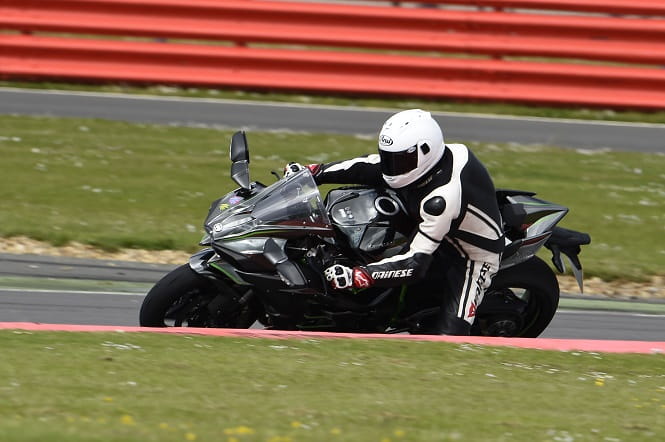
BMW S1000RR: Road bike heaven
BMW has been king of the 1000cc sports bikes since 2010 when the mighty S1000RR rocked up and blew its rivals into the weeds.
Now in its third generation with a new chassis, improved power, new electronics and new styling, the S1000RR is one of the best superbikes money can buy, but is starting to feel its age. Just ever so slightly.
But we’re talking tenths, and milliseconds in some of the highest company it could ever meet. The BMW actually feels big compared to the R1 and the Ducati but for me that makes it more manageable, more comfortable and easier to move around on.
The electronic front and rear suspension is semi-active (except for pre-load) and allows you to take the mickey with corners. There’s not ultimately as much feel as with the Yamaha and Ducati, but it allows big lean once you learn to feel what’s going on from the suspension.
It steers fast and gets into the corner quick. You can stop, get it leant over and power hard out of a corner using the anti-wheelie control and traction control. Though it’s not as predictable as the Yamaha and Ducati system as it occasionally catches itself out and buckaroos before correcting itself. The quickshift system works great on the upshift and makes quick work of downshifts on track, just tap the lever and it changes down. Ultimately the system isn’t as slick as the Ducati’s, but it’s still good.
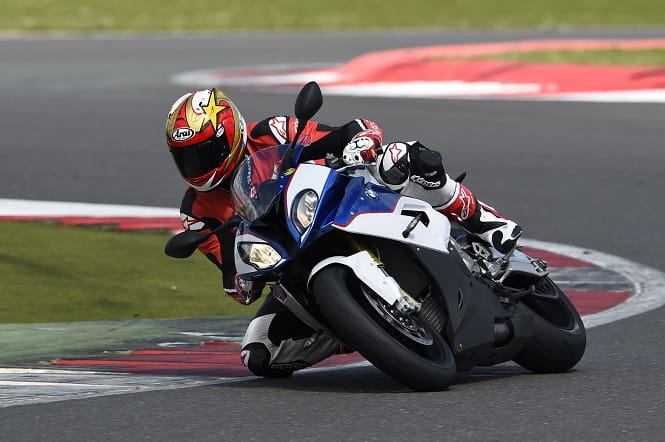
When that power hits the inline four cylinder motor screams, with a noticeable step-up in power at 12,000rpm all the way to 15,000rpm that takes your breath away. It just keeps on pulling with that howl from the exhaust and your focus on what’s coming up next. The world moves fast on the Beemer. All of the bikes here have impressive engines, but the BMW howls and on-the-road or track it’s mind melting.
The BMW’s ace is that it is so incredibly easy to get on and ride ridiculously fast. It flatters fast riders and makes them super rapid, and makes fast riders someone to be feared.
On–the-road, the S1000RR and its electronic suspension flattens out bumpy roads, giving you so much confidence in covering ground rapidly. And it’s the most practical of the bikes here, it’s comfortable, so fast it hurts, brilliant on the road and even has cruise control and heated grips.
As an all-round ride everywhere do everything road bike the BMW is the best real-world choice. As Michael Dunlop has proven, with a few tweaks in the Superstock class the bike is good enough for a 129mph lap of the Isle of Man TT course. It’s testimony to him, but also to what a brilliant road bike the BMW is.
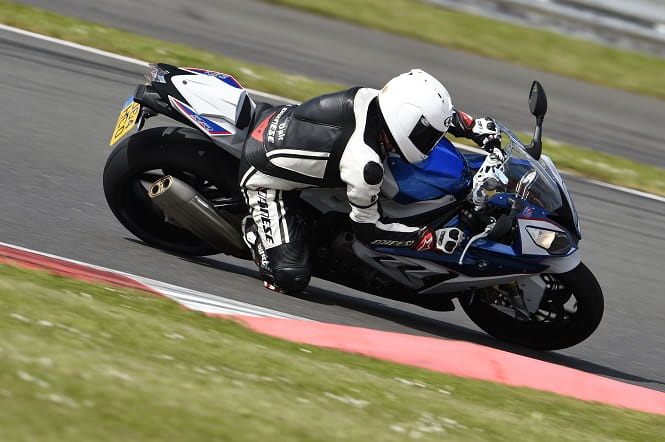
DUCATI PANIGALE 1299S: Victoria’s Secret Supermodel
For sheer looks alone then the Ducati is the winner. It’s not as glitzy as the Kawasaki and its unobtanium paint scheme but it is the one everyone wants to drool over, once the Kawasaki had stopped chirruping for attention.
Like the BMW, the Ducati had a full makeover for 2015 so it’s an all-new bike from the frame up. With a claimed 205bhp from the L-twin, the bike offers some serious power and on dyno tests we’ve seen is actually more powerful than the Yamaha and even the mighty powerhouse BMW.
Of course you get the glorious engine and that booming sound of the L-Twin motor, the grunt, the power and the glamour of the Ducati. But it’s not just the motor that makes the Ducati so satisfying to ride.
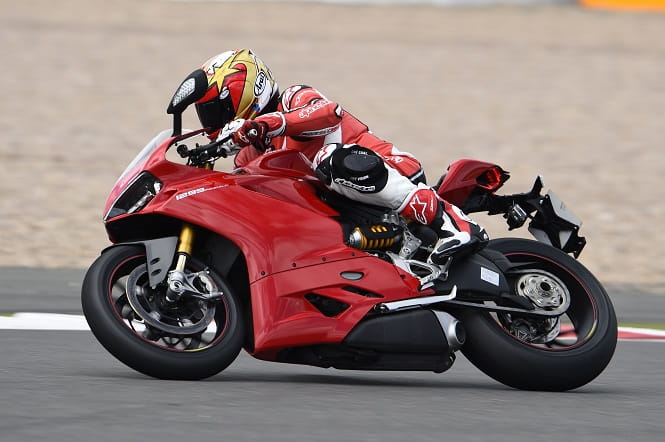
It’s every bit the road-legal SBK race bike with its full electronics package of adjustable anti-wheelie, traction control, power maps, fully electronic semi-active Ohlins suspension. It’s expensive too at £20,795 But there is a standard bike available for £16,695 With a few detail changes, the biggest change being conventional suspension.
But for that expense you get an incredibly capable sports bike that you have to ride hard to get the best out of it. Ride it gently and the Ducati feels like its chugging around, but ride it fast and the chassis really comes alive and the electronics allow you to play with 205bhp. The Ducati flatters expert riders. On-the-road the Ducati turns you into a TT hero. On a bumpy backroad the Ohlins takes the rough out and smoothes out the bumps. If everyone rode a 1299S the roads would be in a far worse state as it flattens out rough roads.
You have to put your trust in the electronics to ride it fast. Mash the throttle open at 100per cent and let the bike do the work and it’s as rewarding as anything here. The traction control is the best system here and the anti-wheelie control is adjustable on the move using the handlebar mounted button on the left bar.
Dial in more or less to leave the corner hard with the front wheel hovering in the air. The experience is on a par with the way the Ducati exits corners but the Ducati does it at a faster rate. It’s got more horses. It’s got more noise. It’s invigorating.
After a few laps you feel like it’s just that bit harder work on the Ducati, even though ultimately given a Superpole style lap challenge I reckon I’d be faster on the Ducati over three laps. But over 10 laps I’d have an easier time on the BMW or R1. The downshift blipper system means the clutch is a thing you no longer need except for pulling in and pulling out of the pits, and even at full lean, knee down, the system is faultless.
You have to work with the Ducati, but get the perfect lap, get in tune with the way the Ducati drives, learn to use its slightly slower steering to your advantage and feel the Ohlins semi-active suspension working hard and the 1299S is a special experience. If the Yamaha is the Nissan GT-R – ultra fast, predictable, and mind-blowingly competent, the 1299S is your Ferrari 458 Italia – fast, aggressive, racey and so beautifully Italian.
The Yamaha may be the perfect sports bike, but the Ducati is the exotica, the hard-wired bad-ass 1299cc of pure adrenaline, and the one that ultimately if I could afford it would be pride of place in my shed.
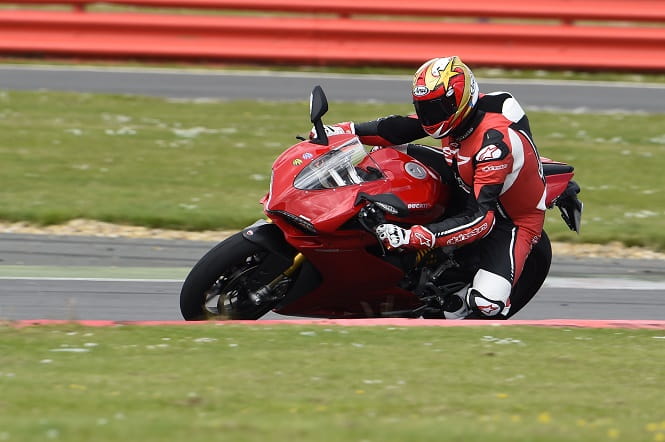
SECOND OPINION:
Bike Social web editor, road rider and occasional track rider Michael Mann gives his opinion on the bikes after two days on track and test strip.
BMW S1000RR…old dog with plenty of new tricks
BMW’s 2015 litre-machine is a glorious specimen. It carries a potent combination of an abundance of technology, a tonne of speed and a sharp-steering chassis. I switched between Slick and Race modes and found the smooth way the 200bhp is delivered a pleasure to keep feeding in. The chassis, suspension and tyres work as well together as cheese, chips and gravy do. They offer a rider-friendly feeling encouraging you to push further and faster into each corner with confidence and stability.
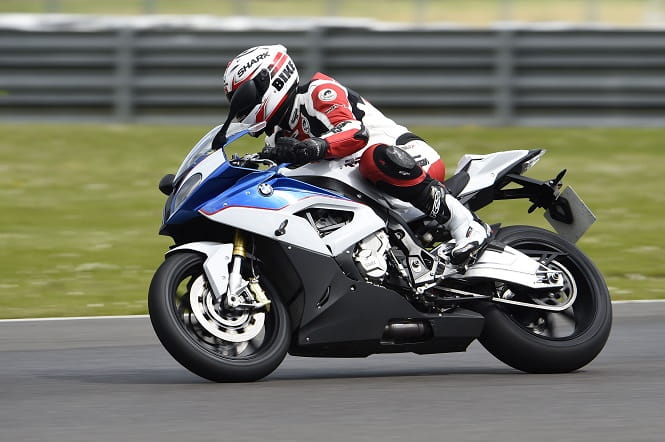
The quickshifter makes the clutch redundant once you pull away and the slightest nick on the upshift is all the S1000RR needs to pair that sweet engine note with a bucket full of revs, it’s a thing of real pleasure. However, despite the slick upshifts it’s coming back down that requires a little more effort. There’s a miniscule amount of clumsiness about it which is surprising given the time and money BMW Motorrad must have given to the bike’s R&D.
There’s little wonder the BMW won three Isle of Man TT races on its factory-backed debut with Michael Dunlop last year, such is its ability.
Ducati 1299 Panigale S…the Supermodel you’d most want in your garage
Stylish classy Italian supermodels often make men go weak at the knees and the same thing happens when the 1299S ignites. Swing a leg over and it makes you feel like you’ve won the lottery, but being a V-twin it requires a different riding style than an in line four like the R1. A little less throttle abuse allows the engine’s fast revs and bucket load of torque to do the work while the huge amounts of power is delivered in a refined manner. A swift head-butt of the fly screen is guaranteed if you hit the rev-limiter though.
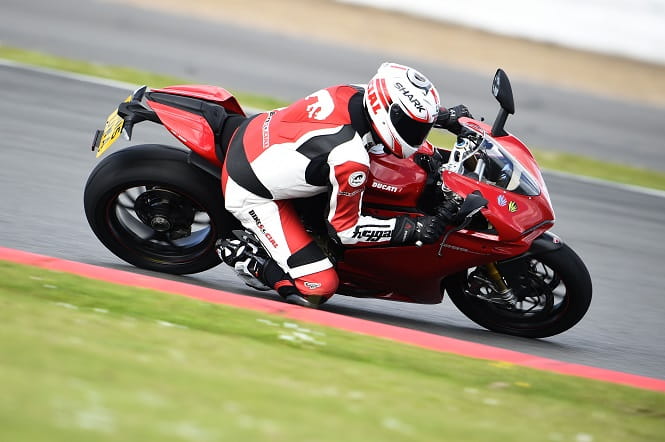
The Ducati is perfectly balanced, stable in the corners yet brutally quick when you dare pin the throttle. The auto-blipping quickshifter is just one example of refined Italian technology that you can have faith in. A little heavier to steer and get turned than the R1 or S1000R, but it is the bike that I’d want in my garage.
Kawasaki Ninja H2…the bike that will make you new friends
The new world of supercharged motorcycling is a hyper fast one for now, so long as it takes place in a straight line. The H2 is epically quick and resembles a rocket ship with its lengthy nose, above average weight and futuristic instrument panel. The supercharger whinnies as you pile through the revs and gears almost faster than you can count but then you reach a corner and the H2 gets scared.
The weight upsets the bike’s balance when you tip it in and when it settles you are then threatened with a fast exit from the saddle with a highly sensitive and quite unpredictable throttle action. The supercharged motor can’t wait to be unleashed once again which is manifested in a jolty corner exit. Straighten it up, aim towards the next corner, reel back the throttle and feel yourself catapulted along once again. It’s a thrill and I dare anyone to criticise such an engineering feat without riding it first.
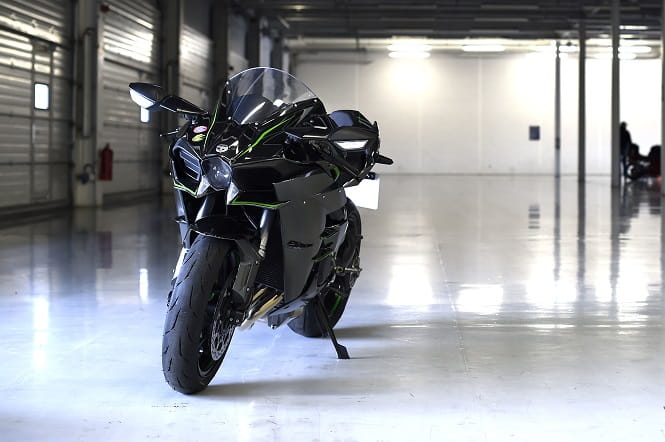
The H2 is a phenomenon, an A-lister ready to grace the celebrity pages, an iconic machine that’s incomparable with other motorcycles and will attract a crowd whether you like it or not. That means when you are at the petrol station (which at 21mpg you will visit often), at every set of traffic lights, on the motorway where every car you pass children will point and dad’s will gawp…wherever you go.
Yamaha R1…almost 200bhp in a supersport chassis
A wolf in sheep’s clothing. A completely stock R1 straight out of the dealership may not look like a lap record chaser but it will challenge most track day weaponry in the right hands. This is a finely engineered motorcycle with a punchy, raucous crossplane engine that is hugely user-friendly.
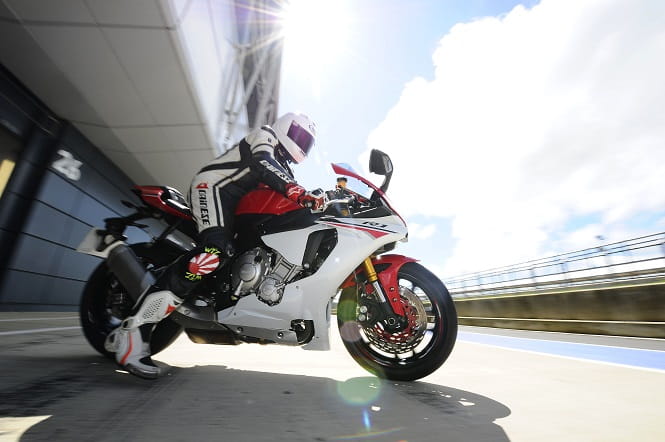
Usually to ride a motorcycle well requires vast amounts of rider input but the R1 will make anyone look good with its finely balanced almost 600-esque chassis, silky smooth quickshifter enabled gearbox and a barky exhaust note that resembles the M1 of Valentino Rossi.
It’s a wonderful motorcycle that ticks every box and even riding around Silverstone/Bruntingthorpe you know that you could just ride out of the gates and cover another 100 miles of A and B roads in comfort. An everyday bike that perhaps hasn’t got the desirability of a Ducati nor the premium badge of BMW, but it is the complete package for sub-£15k.
DATA LOGGING (Bruntingthorpe Proving Ground)
After a stint on track using Silverstone's International circuit the four bikes were transported to Bruntingthrope Proving Ground in Leicestershire. We fitted them with datalogging equipment to compare performance times. We rated them over a 1/4 mile, from a standing start to 60, 100 and 160mph. We also tested their braking ability from 70 mph to stand still. Unfortunately we ony had half of the 2.2 mile runway to test and only the Kawasaki got up to its true top speed of 181mph in the space we had.
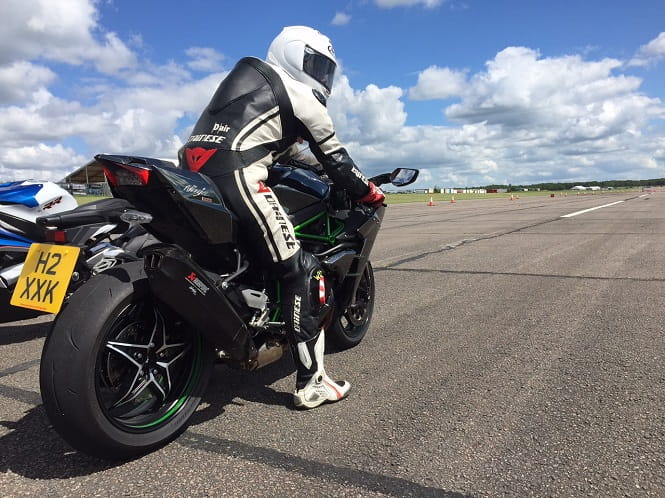
The results show the mighty Kawasaki using all of its supercharged motor in a straight line, but the extra weight its carrying showed up under the braking test.
|
|
BMW S1000RR
|
Ducati Panigale S
|
Kawasaki H2
|
Yamaha R1
|
|
1/4 mile
|
10.26
|
10.18
|
9.91
|
10.25
|
|
0-60
|
3.32
|
3.33
|
3.07
|
3.07
|
|
0-100
|
5.68
|
5.66
|
5.23
|
5.71
|
|
0-160
|
11.99
|
12.32
|
11.02
|
12.2
|
|
70-0
|
3.44
|
3.33
|
3.69
|
3.18
|
|
1/4 mile speed (mph)
|
152.07
|
151.56
|
154.91
|
148.28
|





TECHNICAL SPECIFICATIONS:
|
|
BMW S1000RR
|
Ducati 1299 Panigale S
|
Kawasaki Ninja H2
|
Yamaha R1
|
|
Engine
|
Water/oil-cooled, 4-cylinder, 4-stroke in-line
|
1285cc, Superquadro L-Twin, 4 Desmodromically actuated valves per cylinder, liquid cooled
|
Liquid-cooled, 4-stroke In-Line Four, 998cc, DOHC, 16 valve. Supercharged.
|
Liquid-cooled, 4-stroke, DOHC, forward-inclined parallel 4-cylinder, 4-valves
|
|
Power
|
199 bhp @ 13,500 rpm
|
205 bhp @ 10,500 rpm
|
207.2 bhp @ 11,000 rpm (with ram air)
|
197.3 bhp @ 13,500 rpm
|
|
Torque
|
113 Nm (83.3 ft lbs) @ 10,500 rpm
|
144.6 Nm (106.7 ft-lbs) @ 8,750r pm
|
133.5 Nm (98.5 ft-lbs) @ 10,500 rpm
|
112.4 Nm (82.9 ft-lbs) @ 11,500 rpm
|
|
Suspension
|
Front: Upside-down telescopic fork Ø 46 mm, compression and rebound stage adjustable
Rear: Aluminium 2-sided swing arm, compression and rebound damping adjustable
|
Front: Fully adjustable Ohlins TTX36 unit. Electronic compression and rebound damping adjustment with semi-active mode, 120 mm travel
Rear: Adjustable linkage: progressive/flat. Aluminium single-sided swingarm. 130mm travel
|
Front: ø43 mm inverted fork with rebound and compression damping, spring preload adjustability and top-out springs
Rear: Uni-Trak with gas-charged shock, dual-range (high/low-speed) compression damping, rebound damping and preload adjustability, and top-out spring
|
Front: Telescopic forks, Ø 43 mm, 120mm travel, 24 degree caster angle, 102mm trail
Rear: Swingarm, (link suspension), 120 mm travel
|
|
Brakes
|
Front: Twin disc brake, floating brake calipers, 4-piston fixed caliper, diameter 320 mm
Rear: Single disc brake, single piston floating caliper, diameter 220 mm
ABS: BMW Motorrad Race ABS (part-integral), disengageable, modes to select
|
Front: 2 x 330mm semi-floating discs, radially mounted Brembo Monobloc M50 4-piston calipers with cornering ABS as standard equipment
Rear: 245mm disc, 2-piston caliper with cornering ABS as standard equipment
|
Front: Dual semi-floating ø330 mm discs. Caliper: Dual radial-mount, monobloc, opposed 4-piston
Rear: Single ø250 mm disc. Caliper: Opposed 2-piston
|
Front: Hydraulic dual disc, Ø 320 mm
Rear: Hydraulic single disc, Ø 220 mm
|
|
Dimensions
|
Length: 2,050mm
Weight: 826mm
Height: 1,140mm
|
L: 2,070mm
W: 745mm
H: 1,105mm
|
L: 2,085 mm
W: 770 mm
H: 1,125 mm
|
L: 2,055mm
W: 690mm
H: 1,150mm
|
|
Wheelbase
|
1,438mm
|
1,437mm
|
1,455mm
|
1,405mm
|
|
Seat height
|
815mm
|
830mm
|
825mm
|
855mm
|
|
Fuel tank capacity
|
17.5 litres
|
17 litres
|
17 litres
|
17 litres
|
|
Weight (wet)
|
204kg
|
190.5kg
|
238kg
|
199kg
|
|
Price (as tested)
|
£14,760
|
£20,795
|
£22,000
|
£14,999
|
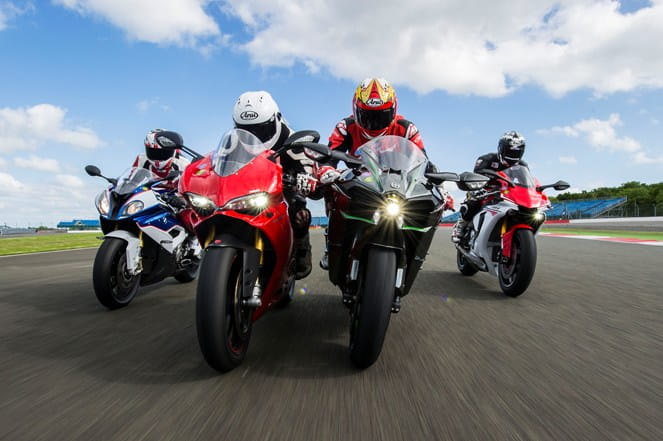
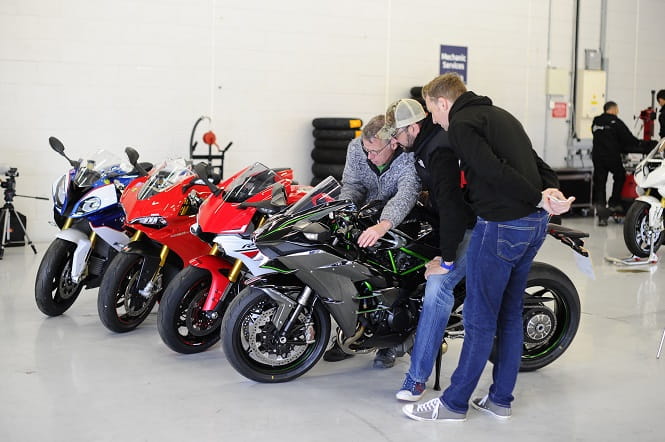
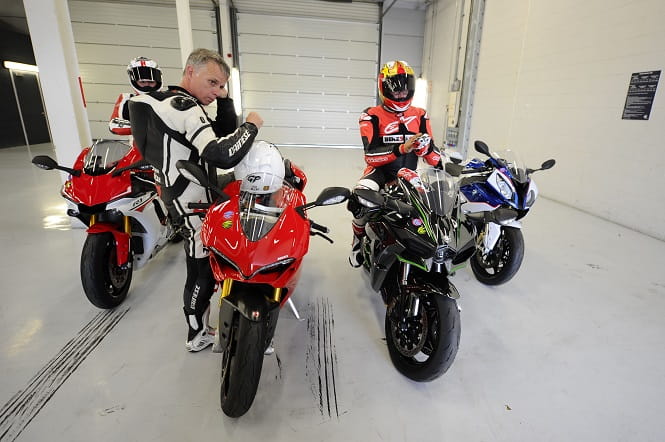
We couldn't agree on our favourite so the obvious question is which would you choose?


